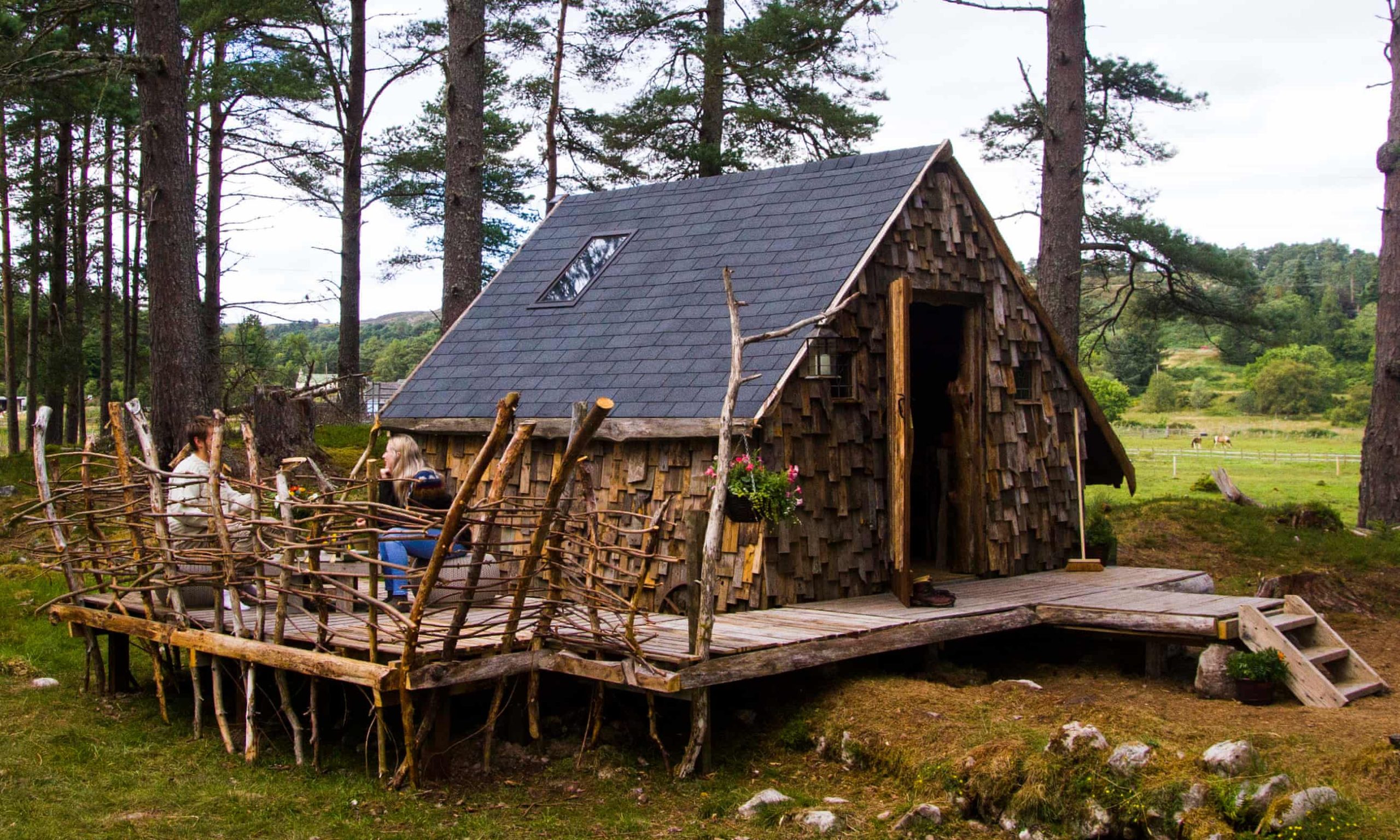
Simplicity is key to a cabin stay and while few of us go the full Thoreau, retreating to a spartan, isolated setting is more appealing than ever
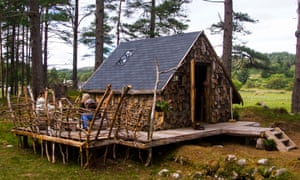
Afew years ago, I lived in a cabin for several months. It was in a glade at the bottom of a steep-sided cwm (valley) in the Black Mountains, south-east Wales. The single room was furnished with a bed, a table and a chair. Water came from a nearby spring, and I had a wood-burning stove, a gas ring for cooking and an outside, composting toilet. The front deck overlooked a brook, which provided the ambient soundtrack to my dreams.
I lived a pared-down life in a pared-down house. I woke at first light and went to bed at sunset. I cooked everything in one pot and chopped my own firewood. There was no electricity and no wifi. I couldn’t even tune the radio. I had to cross a fence and walk 200 metres up a bracken bank to get intermittent mobile reception. Quietly, I cut myself adrift from all forms of media – and who doesn’t feel like doing that these days? There was, correspondingly, a lot of time: time to read, observe the birds and watch the trees “dreaming out their old stories to the wind” as Thomas Gray wrote. There was time to listen to rain on the tin roof and, for me, time to write. I left with the first draft of a book.
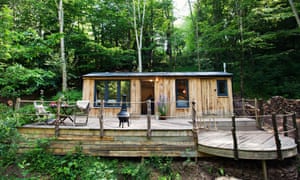
Writers regularly retreat to cabins. Virginia Woolf, Roald Dahl and George Bernard Shaw all had writing sheds or huts. Dylan Thomas converted an old boathouse overlooking the Taf estuary into a writing shed – the “bard’s bothy”; and over the hill from the cabin I lived in, Jan Morris used to hide away in what she called her “dacha”, for long stints at the typewriter. The appeal of cabins goes far beyond the literary world, though. In fact, what cabins offer writers – isolation, simplicity and nature – is alluring to more and more of us.
Simplicity is key. The most famous cabin of all, Henry David Thoreau’s, on the shore of Walden Pond near Concord, Massachusetts, was just 10ft x 15ft. Convinced that “the mass of men lead lives of quiet desperation”, Thoreau built his cabin and furniture using only what the forest provided, in 1845. He lived there for two years and two months, to explore the spiritual benefits of a simplified lifestyle and “to front only the essential facts of life”. Thoreau’s book, Walden, a eulogy to the rapture of cabins published in 1854, has only become more relevant as the years have passed.
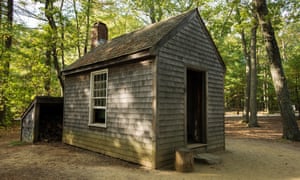
The best cabins are, like Thoreau’s, made from low-impact or even salvaged materials; they should feel temporary, hinting at the fragility of human existence and encouraging us to live well now. The cabin I stayed in was clad in offcut, irregular planks of Welsh oak; it was newly built when I moved in but, as the oak silvered, it soon looked like an organic part of the woodland. Ideally, cabins should also reflect a vernacular tradition: Thoreau’s was a homage to the pioneers who first settled the American interior.
Among cabins available as holiday lets, I like Arnor the Ranger’s Hut (from £69 a night, sleeps 2), on the edge of a Caledonian pine wood near Dornoch Firth, north of Inverness. It has one room and is made mostly from wood, in keeping with a Highland tradition of simple, rustic buildings, such as mountain bothies, forestry huts and stone “summer shielings”.
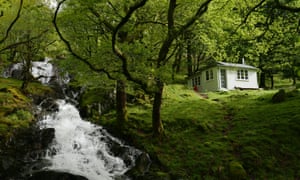
Cabins should not be monkish cells, though: simplicity is not the same as asceticism. The Old Tea Hut (from £250 for a weekend, sleeps 6-8), in Whitsand Bay, east Cornwall, has three bedrooms, but it illustrates another key point: cabins should blend with their environment in a way that draws the natural world in. Halfway down a cliff overlooking the bay, it celebrates sea breezes, the tang of salt in the air and the view along the beach to Rame Head. Similarly, the National Trust’s Cartref (from £225 for three nights, sleeps 2), near Beddgelert in Snowdonia, is all about the setting – in a sessile oak wood, beside a dashing stream with dramatic mountain views. The cabin is neither roomy nor grand but it is a gateway to the natural world and a reminder that the link between nature and human health is nuanced.
Since the publication of Cabin Porn in 2015, this unpretentious architectural form has had a revival. Inevitably, this has included plenty of phoney cabins that would have sent Thoreau into paroxysms of anxiety. There are now “cabins” packed full of modern conveniences like boutique hotel suites, but they miss the point: wood-burning stoves, knee rugs, stove-top espresso machines, hot-water bottles, hammocks, playing cards and candles are acceptable; power showers, hot tubs, heated towel rails and smart speakers are not.

Cabin dwellers should be comfortable but not spoilt or, even worse, continually distracted by trying to figure out how all the domestic appliances work. At Buck’s Coppice (from £145 a night, sleeps 2), overlooking a lake beside an ancient Dorset woodland, spartan means stylish, but the only entertainment is nature passing by outside.
Cabins refresh parts of us other forms of accommodation cannot reach – they are a tonic for the spirit, an ointment for the imagination and a balm for the soul. Whether you are retreating from the rat race – or Brexit news – for a long weekend, writing an opus or, like Thoreau, trying to emancipate yourself from material possessions for two years, cabins offer something unique. You may get cabin fever in the end, but cabin serenity comes first.
Rob Penn is author of The Man Who Made Things Out of Trees (Penguin, £9.99). To order a copy for £8.79 plus p&p visit the Guardian Bookshop. His cabin, the Wood Shack, can be booked through sugarandloaf.com (three nights from £298)
FIVE UK CABIN ESCAPES
The Duck Hut, Powys
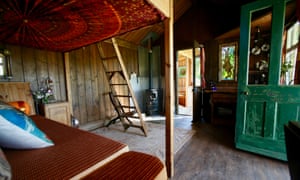
A fishing and shooting hut built in the 1940s, this cosy wooden cabin is in a secluded meadow near Montgomery and the Welsh/English border. There’s a mezzanine bed for two, small kitchen, woodburner and terrace with views of the Shropshire countryside, plus a separate shower shack, firepit and barbecue close by. If embracing solitude, bring supplies. Alternatively, there are several pubs and a cafe a few miles away, or Ludlow is a 45-minute drive. Nearby hiking routes includes the rocky ridge of Stiperstones via the Mitchell’s Fold stone circle or into the surrounding Shropshire Hills, an Area of Outstanding Natural Beauty.
• From £75 a night, canopyandstars.co.uk
Owlet Cabin, north Devon
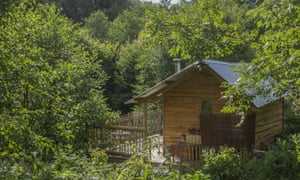
In a wildlife-rich valley near Bideford, this raised wooden cabin with an outdoor kitchen and dining area on the deck is made for summer evenings. The hut’s rustic interior includes a double-width built-in bunk bed, woodburner and solar fairy lights, with a separate eco-shower and compost toilet. An honesty shop, shared with Owl Valley Camping, sells essentials including milk, bread, beans, eggs, logs and barbecue coals. The 32-mile long Tarka trail runs through Bideford, for walking or cycling, and the beaches of Westward Ho! and Appledore are less than 15 minutes’ drive away.
• From £92 a night (open Mar-Dec), coolcamping.com
St Aiden Hut, Northumberland

Designed by an award-winning RIBA architect, this new collection of three huts has views of the North Sea right from the bed. It’s also off-grid, with solar-panels powering the lights, gas hobs (for simple meals and hot drinks), coolbox, firepit and an en suite composting toilet. The separate shower is a 10-minute walk, or head to the sea! You can reach the Northumberland coast in just two minutes. A welcome pack of essentials is provided and there’s Scott’s deli or the Hope & Anchor in the village of Alnmouth, a 10-minute walk away.
From £80 a night, canopyandstars.co.uk
The Land Girls Cabin, Somerset
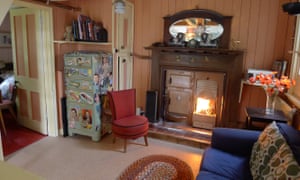
This second world war tin holiday cottage was originally built for the Women’s Land Army, and restoration work has included nostalgic details, such as utility furniture, Bakelite switches and a vintage radiogram. It sleeps up to five, with the adjacent Anderson shelter making a perfect play den for the kids, too. There are views of Glastonbury Tor from the garden (the Tor is a 10-minute drive) or the beach at West Bay (as seen in Broadchurch) is an hour’s drive. There’s a pub, farm shop and church in the nearby village of Baltonsborough (15-minute walk).
From £54 a night, underthethatch.co.uk
Blue Cabin by the Sea, Berwickshire

Described by Stephen Fry as “the coviest of coves”, the conservation of Scotland’s pretty Cove Harbour is part supported by profits from this sea-facing cabin. An hour’s drive from Edinburgh, this bolthole sleeps up to 4 in one double and two bunks. There’s also a small kitchen, living area with a woodburner, and a shower room. Outside, a terrace with seating and barbecue help make the most of the local haul, including lobster and crab direct from the fishermen. Beyond the beach, there are cliff-top coastal paths to explore.

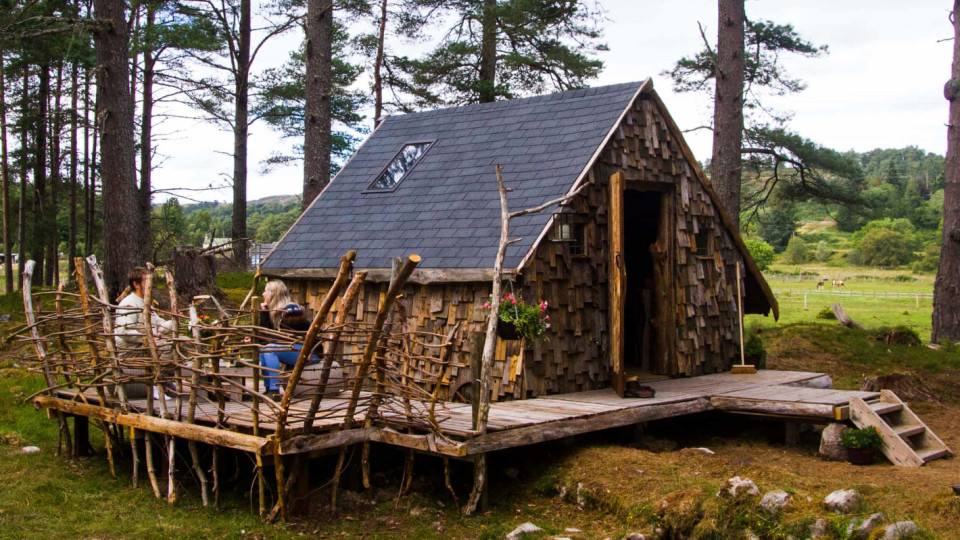









Leave a comment